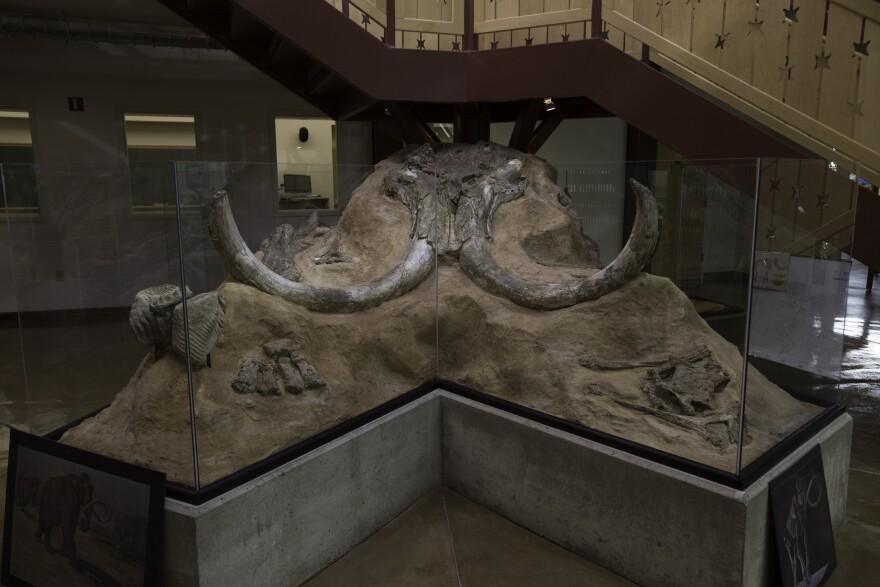In July 2022, Michael Towell, a facilities worker at Principia College in Elsah, Illinois, was using an excavator. He was digging for soil that would later be used to shore up some of the roads on the campus that sits high atop the limestone bluffs overlooking the Mississippi River.
About 12 feet below the surface, Towell saw something white. Luckily, he stopped the excavator. Scientists now confirm that what he saw is an ancient tusk that belonged to either a mammoth or a mastodon.
Andrew Martin, an associate professor at Principia College, says he is incredibly excited about the prehistoric find. He plans to begin excavating the fossils this fall along with students who take his fieldwork class. Until then, the area is cordoned off and protected from the elements.

“It's an amazing opportunity for the campus to really engage in experiential learning for the students and exciting for the campus too,” Martin told St. Louis on the Air.
Principia College is uniquely equipped for the excavation because it isn’t the first time an ancient mammal has been discovered on campus. A mammoth was previously discovered there in 1999. It was given the name “Benny” and is displayed on the bottom floor of the college’s science center.
That mammoth lived about 17,000 years ago, and it’s theorized that because it was fairly intact, a dust storm may have killed it. Mammoths and mastodons were attracted to the banks of the Mississippi River during the spring and summer, but during winter months, the river would dry up. The grasses that returned to tundra — along with sediment left from the river — would create dust storms.
Whether the mammal is a mastodon or mammoth won’t be determined until the excavation begins.
“If we excavate the tusk, and it turns out that it's curved and goes back down into the earth, it's a mammoth,” Martin said. “If it ends with just a gentle curve, it's probably a mastodon.”
“St. Louis on the Air” brings you the stories of St. Louis and the people who live, work and create in our region. The show is produced by Miya Norfleet, Emily Woodbury, Danny Wicentowski, Elaine Cha and Alex Heuer. Avery Rogers is our production assistant. The audio engineer is Aaron Doerr. Send questions and comments about this story to talk@stlpr.org.





